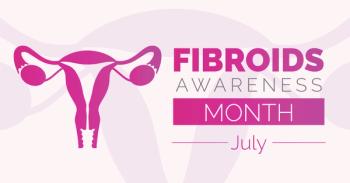
Hysteroscopic myomectomy for submucosal fibroids
Women with submucosal uterine leiomyomas who undergo hysteroscopic removal have comparable birth outcomes to women with submucosal uterine leiomyomas who do not have hysteroscopic removal, according to a retrospective case-control study in the American Journal of Obstetrics & Gynecology MFM.
“Previous studies have demonstrated increased rates of poor obstetrical outcomes including preterm delivery, placental abruption, and intrauterine growth restriction in women with uterine leiomyomas,” wrote the authors. “Currently, preconception myomectomy has not been reported to improve pregnancy rates or pregnancy outcomes in women with subserosal leiomyomas, and the data remain inconclusive for intramural fibroids.”
Although pregnancy rates have been found to improve after the removal of submucosal fibroids, the effect of preconception myomectomy for submucosal fibroids on birth outcomes has yet to be assessed, according to the investigators.
The current study sought to determine whether hysteroscopic excision of submucosal leiomyomas impacts the rate of preterm delivery and other obstetrical outcomes.
The final chart review comprised 62 women from Christiana Care Health System in Newark, Delaware, who were diagnosed with submucosal fibroids and underwent hysteroscopic myomectomy between January 2001 and January 2014. There were also 215 controls of women with submucosal fibroids without hysteroscopic myomectomy (case-to-control ratio, 1:3).
All women delivered a nonanomalous fetus beyond 20 weeks' gestation.
Cases and controls were similar in age, race, body mass index (BMI) and mode of delivery.
Overall, 66% of cases were primiparous vs. 37% of controls (P = 0.00), whereas 22.6% of cases used assisted reproductive technology to conceive vs. 7.0% of controls (P < 0.001).
However, the study revealed no differences in the rate of preterm delivery at <37 weeks' gestation (12.9% cases vs. 13.5% controls) (P = 0.89); preterm delivery at <34 weeks' gestation (4.84% vs. 6.97%) (P= 0.77); or other obstetrical outcomes.
The chart review indicated that the causes of preterm delivery in the control population were hypertensive disorders of pregnancy (31.2%); preterm premature rupture of membranes (PPROM) (18.75%); intrauterine fetal demise (IUFD) (12.5%); nonreassuring fetal heart tracing (NRFHT) (9.3%); vaginal bleeding in the setting of placenta previa (6.25%); spontaneous preterm labor (12.5%); and unknown causes (9.3%).
For cases, the causes included PPROM (14.3%); NRFHT (14.3%); hypertensive disorders of pregnancy (14.3%); spontaneous preterm labor (14.3%); and unknown causes (42.9%).
There were no statistically significant differences in the rates of preterm birth before 34 weeks’ gestation (7.01% cases vs. 4.84% controls; P = 0.77); PPROM (0% vs. 4.7%; P = 012); placental abruption (0% vs. 1.87%; P = 0.58); fetal malpresentation (9.7% vs. 7.9%; P = 0.66); intrauterine growth restriction (IUGR) (9.7% vs. 17.4%; P = 0.14); IUFD (0% vs 2.3%; P = 0.59); retained placenta (0% vs. 0.47%; P = 0.67); postpartum hemorrhage (3.23% vs. 2.80%; P = 1.00); maternal transfusion (0% vs. 1.4%; P = 1.00); and the rate of cesarean delivery (54.8% vs. 57.5%; P = 0.71).
“Hysteroscopic myomectomy is considered a low-risk procedure, but the impact on future pregnancies is not fully understood,” wrote the authors. “Based on our findings, it seems that a composite of obstetrical outcomes is not significantly affected by hysteroscopic myomectomy, making it hard to know whether myomectomy should be offered to women with asymptomatic fibroids who are considering pregnancy.”
__
Source
- Fonge YN, Carter AS, Hoffman MK. Obstetrical outcomes are unchanged after hysteroscopic myomectomy in women with submucosal fibroids. Am J Obstet Gynecol MFM. Epub 2020 Aug 3.
doi:10.1016/j.ajogmf.2020.100192
Newsletter
Get the latest clinical updates, case studies, and expert commentary in obstetric and gynecologic care. Sign up now to stay informed.











